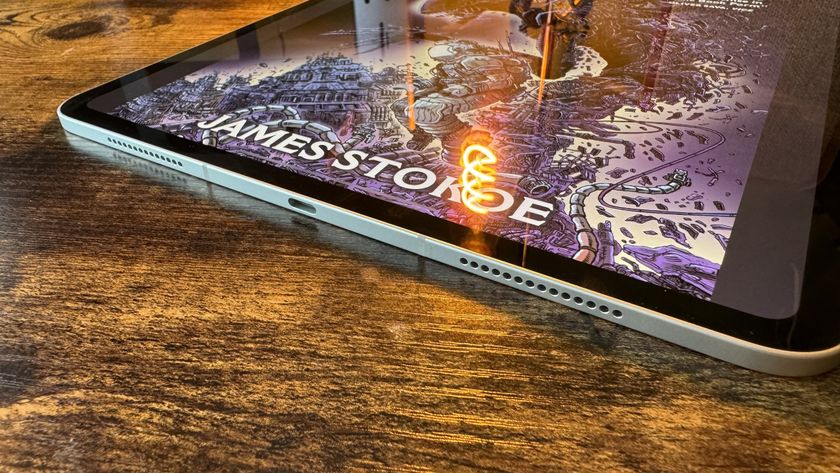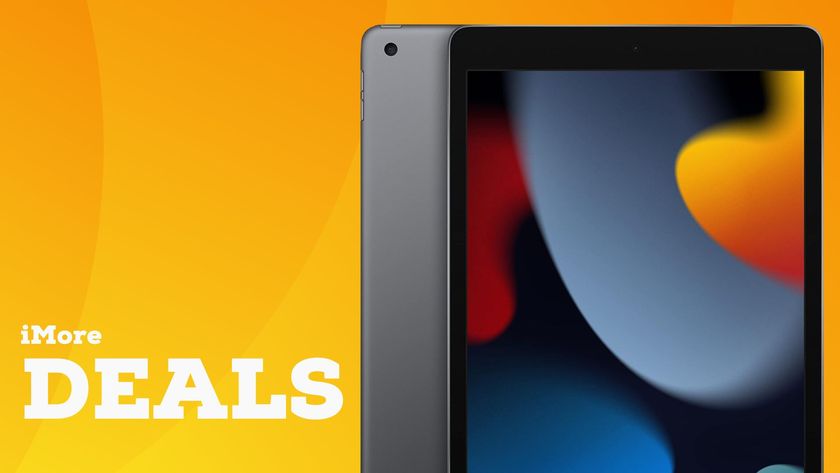iPad and its impact: Five years later
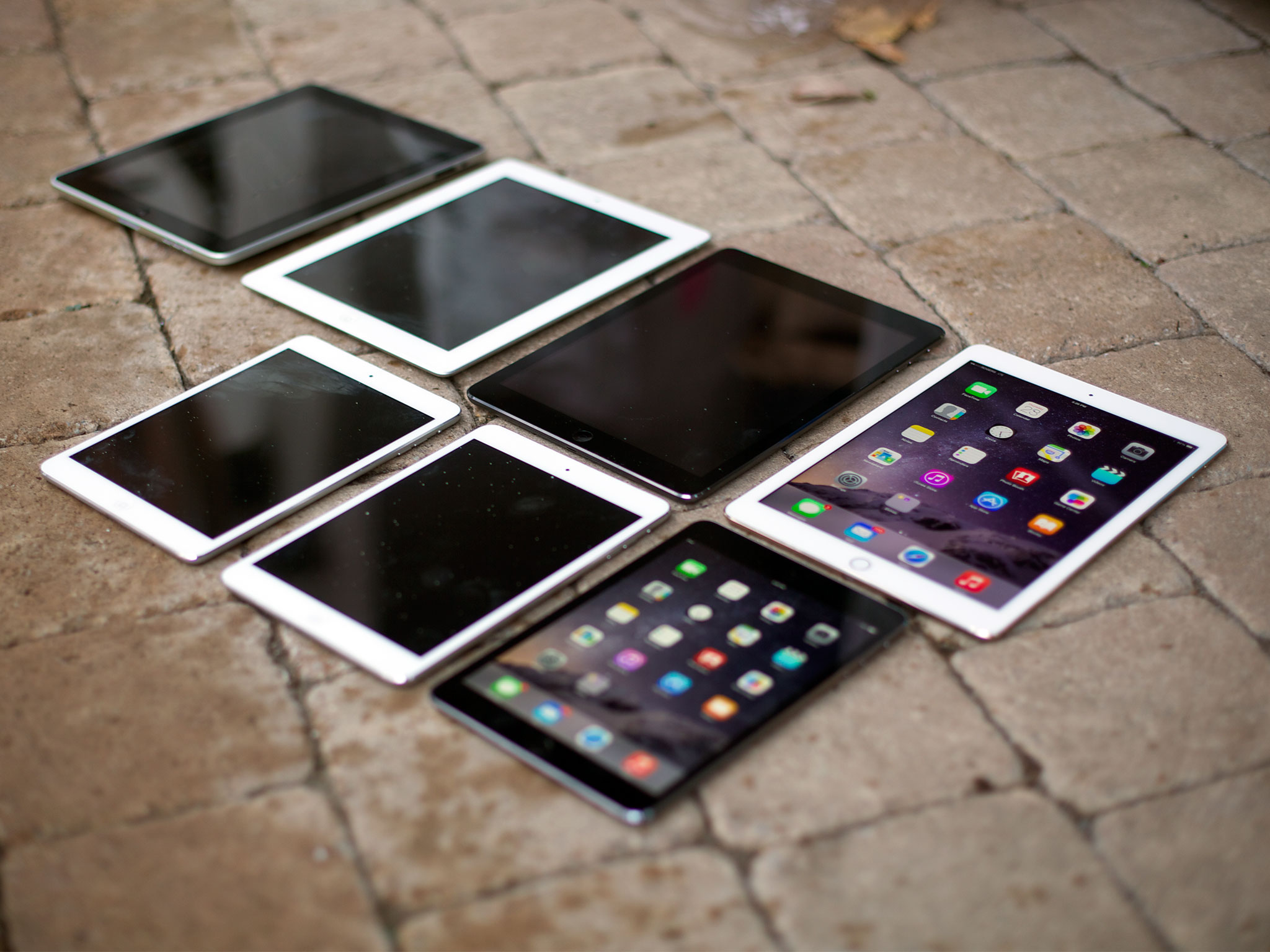
The iPad was the first tablet that made sense. Some accused it of "just" being a big iPhone — and that was its genius. As I said at the time, it was the iPhone gone IMAX: The big screen allowed for a greater sophistication. It gave us a larger window into the Internet and apps and made them both bigger and better. It was also just the beginning...
Magical and revolutionary
On January 27, 2010, Steve Jobs put sneaker to stage at an Apple special event to give what was to be one of the most important keynotes of his life — and one to go down in the history of consumer electronics. The Mac had been introduced decades before, the iPhone only a few years back; yet, on that stage, at that event, Jobs made the case that there was room for a new category of device in-between them both. There was room for the iPad.
The tablet project had began at Apple even before the phone, and following the release of the iPhone, Apple was ready to move ahead. As a product, Steve Jobs reportedly said it was one of the most important of his life — a life filled with important products.
As a device, the iPad had a 9.7-inch 4-by-3 display, came with both fast Wi-Fi and cellular options, and astonishingly, the company's first branded chipset — the Apple A4.
Like the iPhone, there were a dozen built-in apps on the iPad — familiar, but redesigned to take advantage of the bigger screen and the two-column view it allowed. Jobs sat in his chair, on his stage, and showed them all off. Unlike the iPhone, however, the iPad was also announced along with an App Store, so that developers could optimize their own apps for the bigger screen.
To make sure it set the very best example, Apple started the ball rolling with a 10-inch Multi-Touch version of the company's own iWork suite — Pages, Numbers, and Keynote.
Roundtable: First iPad impressions
To get a grandeur sense of the iPad's place in history, we asked some of the original developers, analysts, and members of the media to share what they thought about the iPad when they first saw and experienced it back in 2010.
Master your iPhone in minutes
iMore offers spot-on advice and guidance from our team of experts, with decades of Apple device experience to lean on. Learn more with iMore!

Carolina Milanesi, Kantar Worldpanel ComTech: For me the iPad was one of those devices that got my interest more based on its looks than its brains at the start. In other words, I wanted it, but I could not really say why. The first few days with it were interesting, but not life changing, as force of habit drew me to my smartphone or my laptop more often than not. Then, after about a week, I went on a business trip for two days and I decided not to bring my PC. That is when the lightbulb went off and I truly saw the value of the iPad. Being able to balance work and play while away from the office was my hook. Once back from my trip, my reliance on the iPad had already grown.

Loren Brichter, Atebits: I was blown-away excited by the iPad. I knew from the moment I saw it that these things were going to replace laptops, and in a few years I was going to be doing 99 percent of my work on one. The ergonomics and potential of the hardware was immense — 10-finger multitouch on a huge screen, I could tuck it under my arm, and use it while standing.

Ken Case, The Omni Group: The moment iPad was introduced on that Wednesday morning, we knew we wanted to build apps for it. We quickly adjusted our plans, and had already started work on OmniGraffle for iPad by 5pm that same day. Two days later, I posted our "iPad or Bust!" plans to our blog, letting all of our customers know that we felt the iPad was important enough to set aside many of our previous plans for 2010 to focus our attention on bringing all five of our productivity apps to iPad.

Ben Bajarin, Principal at Creative Strategies, founder of Tech.pinions: I was extremely bullish the first time I say the iPad. I attended the launch and the way Steve Jobs demonstrated the use cases for such a product, I knew it had legs. In particular Steve Jobs said this quote that I still feel is the upside mass market promise for the iPad.
"The iPad is more intimate than a laptop and more capable that a smartphone"
This quote exactly highlights why most people don't love their PCs. In fact, many mass market consumers fear or loathe their PCs because they feel they are too difficult to use. They are not intimate as they are kept at arms length. Where as with the iPad we hold them to use them. I'm fond of saying, things we hold we love. Especially those we hold for long periods of time.

Jason Snell, Six Colors, formerly Macworld: I think we were all a bit curious about where the iPad would fit into our lives, if anywhere, and wondered if there was a market for it. The idea of a bigger iOS device was always intriguing, but once the final details of the iPad's size and weight and price all fell into place, it turned into a puzzle for us to ponder.
Then I finally got my hands on one — a day or two before the product launch — and I was immediately impressed with the quality of the hardware. Unlike all future iPads, that first one was truly chunky--it had sides, not just curved panels that connected the back to the front. But it truly did feel like a product that had fallen through a wormhole from the future, all screen and solid aluminum. By today's standards, it's already an antique after five years, but in the moment Apple's strength in hardware design really shined.

Don Melton, former Director of Internet Technologies: I always wanted a bigger version of Mobile Safari. I just found the Web so limited on the iPhone. These were not 6 Pluses back then, and my farsightedness — the eye problem, not the prophecy problem — made it damn difficult for me to use. So when Scott Forstall told us we were actually going to build a tablet, I was excited — just for selfish reasons.
I did know that customers would benefit from and enjoy a bigger Web experience on a Multi-Touch device. I have to be honest though, I had no idea Mobile Safari would be the first "killer app" for the iPad. It was just insanely popular. For some people, it was the reason they bought an iPad. Even if they didn't always know it: For example, in the initial version of iBooks on iPad, WebKit rendered every page.

Jeannie Yang, Smule: Oh, there were no questions or hesitation when it came to the iPad, more like salivation to get our hands on it. We didn't know what to expect, but knew it was no doubt going to force and inspire us to think differently. Magic Piano was released with the first iPad and we've not looked back since.

James Cuda, Procreate: The iPad unveiling was the catalyst for starting Savage Interactive, and I instantly wanted to develop for it. Until that time, we had only flirted with the idea of developing iPhone software. The iPad was so radically compelling that it completely changed our thinking. Apple introduced a beautifully designed machine with no fans, no cords, and completely mobile with a gorgeous 9.7-inch screen. The custom made A4 chip was astonishing at the time, and it's what we targeted to develop the Silica painting engine. We saw the iPad as the first real 21st-century personal computer.

Jim Dalrymple, The Loop: The iPad launch was interesting because it was just Steve sitting in a chair casually using the iPad. You had an immediate feeling of comfort with a device that companies like Microsoft tried, and failed, for years to make popular. You just got it, right away.
The iPad launch
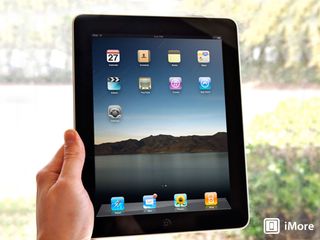
The iPad immediately seized the attention of popular culture. Comedian Stephen Colbert even pulled an iPad out to show up entertainer Jay-Z during the 2010 Grammy Awards. Sensational headlines and cartoons likened its launch to Moses bringing the ten commandments down from the mountains.
Lang Lang, the famed Chinese concert pianist, played Flight of the Bumblebee on an iPad during his first encore at the Davies Symphony Hall. DJ Rana Sobhany became known as the "first iPad DJ". Even before it shipped, it felt like the iPad was everywhere.
On April 3, 2010 people lined up in the U.S. outside Apple Retail Stores and select resellers to get their hands on it. Some 300,000 the first weekend alone. By May 3, after the introduction of the Wi-Fi + 3G model, they'd sold 1 million. By May 31, Apple had sold 2 million iPads. All in less than sixty days.
As product launches go, it was escape velocity. It was faster than anything else in consumer electronic history.
Culture continued to follow. Wired magazine went digital on the iPad that May. Oscar de la Renta designed and debuted an iPad clutch on the runway at Resort show. Paintings made on the iPad by British artist David Hockney went on exhibition in Paris
Barack Obama, President of the United States, autographed an iPad. Talk show host Oprah Winfrey called the iPad the best invention of the century. And Time Magazine named the iPad Gadget of the Year.
The iPad wasn't just a phenomena, however. It was changing lives. Shannon Rosa wrote early on about how the iPad was a "near-miracle" for her son on the autistic spectrum. Cedar Schools of Excellence in Scotland launched a 1:1 iPad:student program. Chicago emergency room physician Dr. Richard Watson detailed how the iPad was and would continue to change healthcare.
When the display increased in size, but the device remained portable, it let more people do more things under a wider range of conditions, and more and more uses were being discovered every day.
Roundtable: The iPad experience

Jeannie Yang, Smule: The iPad most certainly was not a bigger, glorified iPhone. We have to consider that different people use it in different contexts, place and time, than they would with an iPhone. For Smule, it goes beyond the size of the screens as the location of the mic and speakers also change the interaction and something we have to consider in product design with audio. I remember us experimenting with the number of touch points it can handle when developing Magic Piano. We found 11, ten fingers plus your nose. :)

Allen Pike, Steamclock: The original iPhone's constraints made designing simple, clear software much easier than ever before. Presenting every view full screen seems obvious in retrospect, but it was a opinionated choice. Developing for iPhone is all about presenting a series of full-screen view controllers and modals, and designing within that constraint feels great. The iPad's screen size repealed a lot of those constraints, bringing back many of the tradeoffs available to web and desktop app design. Suddenly we could fit almost anything into our apps, for better and worse.

Loren Brichter, Atebits: With the iPad, you had to consider every interface in multiple ergonomic contexts. It'd be easy to design something that worked if you had the thing propped up on a table like a laptop, but it's much more difficult to build something that worked while you were standing and had to have at least one of your hands clenched holding it. If you were lucky you could leverage that thumb, it would have very limited mobility but could be useful for something.

James Cuda, Procreate: In a way the iPad was liberating. A 9.7-inch screen with a resolution of 1024x768px gave us a standardised ratio of 4:3, which meant that as an interface designer, we had predictability. The most captivating aspect of the screen, however, wasn't so much the early iPad interface paradigms. The most exciting aspect was the possibilities of the large 9.7-inch multitouch screen. It might seem obvious now, but at the time this was a big deal we were immensely excited by the freedom of a multitouch screen that size.

Ken Case, The Omni Group: It's hard for me to believe now (when we've just finished bringing all our apps to the iPhone — and one to the even smaller Apple Watch!), but in 2010 many of our apps didn't even fit well on 17" laptops! We were used to thinking of interfaces which made use of every inch of our 30" cinema displays, and were really proud of some of the great features that made use of that space. But if we'd tried to bring all that to a 9.7" iPad screen, it would have been a recipe for disaster.
We had to distill each of our apps down to their essence, and rebuild each app's interface from the ground up. We had to think not only about how to make the apps work on the iPad's smaller screen, but also how to make them work without a cursor for precise positioning and mouse-over tips, without a keyboard for navigation and data entry and shortcuts.
Since we didn't have iPads yet, we spent weeks carrying hand-made iPad prototypes around the office, thinking about how we'd use our apps on them — How we'd hold the iPad in our hands and where our fingers would land on the touch screen.

Mark Kawano, former user experience evangelist, currently Storehouse: The larger sized touch screen had two major impacts. First, the ability to use two-hands on the device. This probably had the biggest impact on music and gaming apps. Second, the ability for two or more people to look at and, in some cases, use the device at the same time. With phones and laptops, it's often considered rude to look at somebody else's screen. With the iPad, it is great and often the purpose of many apps.

Nitin Ganatra, former director of iOS apps, currently Jawbone{.nofollow}: My first thought on the iPad was: YES! We can now make apps that don't require as much navigation to perform common tasks. My second thought was: Holy shit! How are we going to balance this work with everything else? Luckily there were very talented engineers throughout the org to help out.

Federico Viticci, MacStories: When I watched the original announcement in January 2010, I, like many others, thought that the iPad was going to be a great companion device for my Mac. The screen was bright and comfortable to hold, but, as Steve Jobs demoed it, the iPad was meant to be the device you use on the couch to browse Safari and watch videos.
That opinion changed almost immediately after I got an iPad in April. Being based in Italy, I had to import one from the U.S., and I'm glad I did. It became clear to me that the iPad could become a full-time replacement for my MacBook because of its form factor and insane battery life; the only problem was a lack of powerful software that could help me eschew OS X completely.
I kept waiting, using my iPad as a computer as much as I could. And in the end, my decision to invest on the device paid off: Apple made the iPad thinner and more portable over the years, but, more importantly, software got to the point where replacing OS X for every day tasks wasn't impossible anymore.
Looking back today, I'd say that my immediate thoughts after I held an actual iPad were accurate. I just needed to wait for software to catch up.
We believe
The iPad became one of the biggest Christmas gifts of 2010, but it wasn't just growing in the home. It was still growing in schools as well. Same with popular culture, as Hip Hop star P. Diddy used an iPad to sail a superyacht.
By March 2, 2011, over 15 million iPads had been sold. And that's exactly when Apple debuted the iPad 2. It was thinner, lighter, and faster, but Apple's message was that technology alone wasn't enough. It was when technology disappeared, when only the experience remained, that it became truly magical.
Other vendors had been trying to compete by providing what they thought the iPad was missing — a more traditional desktop environment. That turned out not to be a feature on tablets, however, but the opposite. It turned out to be a detriment.
Apple continued to focus on tablet-specific software, both first and third party. By then, there were 65,000 iPad apps on the App Store, and over 350,000 that could run in boxed mode. To go along with the previously introduced iWork for iPad suite, Apple presented iMovie and GarageBand, once again raising the bar when it came to mobile software.
The iPad 2 shipped on March 11 and, by March 25, the Guinness Book of World Records proclaimed the iPad the "fastest-selling consumer electronics device" in history.
There were lineups at Apple Retail again, just like the year before, but this time it wasn't just the young, tech-saavy early adopters. It was people of all ages, young and old, veteran computer users and first time buyers.
President Obama confirmed he had an iPad. The TV show Modern Family set an episode during the iPad launch. The Gorillaz released The Fall ), an entire album recorded on Damon Albarn's iPad during a previous tour. And the Queen of England ordered an iPad after seeing her grand-princes using their own.
The iPad transcended popular culture. It became part of the mainstream.
Roundtable: Retrospective

Carolina Milanesi, Kantar Worldpanel ComTech: As much as some of the coverage on tablets remains gloomy, the impact that the iPad has had on the PC industry has been incredible. ironically, given Apple is a consumer company first and foremost, the impact has been greater within the enterprise segment than the consumer one. Many organizations open the door to Apple for the first time via the iPad. Th iPad took, in many instances, the place of a notebook, but in many more took the place of a paper notebook and pen - it brought digital into areas that were not - from meeting rooms to airplane cockpits. What consumers knew about computing and the many aspects of it that they learnt to tolerate was turn upside down: boot time, anti virus, limited mobility. there is no turning back from there and testament to that is Windows 10.

Federico Viticci, MacStories: The iPad launched a revolution in mobile software that, through the years, has trickled down to the smaller screens of the iPhone. By designing apps for a device that has a screen large enough to be a computer that's always with us, developers have learned to combine their mobile design expertise with the idea of making desktop-class apps reimagined for touch. And because of Apple's relentless push for an integrated ecosystem and bigger iPhones, we've seen how the iPad has helped making these apps available on any iOS device. Today, you can create spreadsheets, edit documents, make music, and edit videos on an iPad and an iPhone, and so much more.
In many ways, the iPad has taught Apple and developers how to deal with multitouch on bigger screens.

Loren Brichter, Atebits: In retrospect I think iPad-the-hardware was much more important than iPad-the-ecosystem. I'm reminded of Steve Jobs' insight about television.
The App Store is just giving people what they want. And it's super depressing to think that lot of potential has been squandered — but maybe it hasn't, the hardware is still immensely powerful, and software is easier to change — the really interesting stuff will only appeal to a super small sliver of the population at first. The trouble is all apps have to incur the friction of going through the App Store, and it's much easier to amortize that over apps with huge user-bases. So it's a recipe to encourage a kind of boring mass-appeal.
I've lost hope that App Store restrictions will loosen in any meaningful way in the near-term, so recently I've been very excited about the possibilities of the web as a software platform. So many people have been trying to make the web "catch up" to native, but I see no reason why it can't completely leap-frog native in every important way. And the iPad has a great browser, so maybe that's the way to sneak something onto the hardware that's actually new and different and interesting.

Jim Dalrymple, The Loop: The iPad was an important launch for Apple. It really gave people a new platform to embrace and fit into their lifestyle, which they did. Older people, business people, students, teachers, kids and every other group saw the wisdom of what Apple was doing with iPad. Its competitors still haven't been able to figure out the secrets of that device.

Allen Pike, Steamclock: The excitement - and terror - of seeing your software demoed on stage at an Apple event is a singular experience. So personally, it was a huge moment. For the industry as a whole though, I'm conflicted. While the iPad has unquestionably had a huge impact on the industry, and has been a big success for Apple, I don't feel like the iPad App Store has had yet had the impact it could have. Five years in, iPad apps still are substantially more work to make than iPhone apps, and for the most part sell substantially less. For now iPad lives in the shadow of its spectacularly successful older brother.

Jason Snell, Six Colors, formerly Macworld: Extending the idea of what a touchscreen device could be was vitally important. These days big smartphones are common, but back then they were at least less so. Exploring what could happen when you had much more real estate to build touch apps was something that developers finally could do. When I got the iPhone, I started performing many tasks that I used to do with a Mac with the phone instead. The iPad and its associated apps peeled stuff away from both the Mac and the iPhone. It immediately found a place in between the quick glances of the phone and the deep dives of the Mac. If touchscreen devices are truly the future of computing, we need to figure out how larger interfaces work within that future. I've used a few apps that try to replicate the functionality of high-end Mac audio and video software on the iPad, and it's clear that there's much more work to be done on the interface front. Throw in the rumors of a possible larger-screened iPad pro and the progression continues. Five years on it's still a work in progress.

Mark Kawano, former user experience evangelist, currently Storehouse: The iPad changed everything. It was something entirely new, unlike the iPod or iPhone which were just the best versions of that category of device. Tablets had so much less traction than smart phones or mp3 players at the time. I think this novelty inspired a lot of people to do all kinds of amazing things and also confused many people.
It's the hardest device to design for and this has made traction tough in a tech climate where mobile developers and designers are already super scarce. It has huge enterprise opportunities, but the lack of innovative product thinkers in that space has made adoption slower but I'm still very bullish and don't think we will really know the impact for another few years.
Kids are growing up with these things and are learning faster because of them. It's an education tool and a babysitting device sometimes. This is going to have crazy implications as these kids grow up.

Nitin Ganatra, former director of iOS apps, currently Jawbone{.nofollow}: The iPad was the fourth Holy Grail of Computing — at least! — that Apple made commercially successful: First was a computer with a GUI that normal people can buy and use (Macintosh). The second was UNIX on the desktop (OS X. The third was rich apps and non-proxied Internet in your pocket (iPhone). The forth was tablet computers (iPad).

Ben Bajarin, Principal at Creative Strategies, founder of Tech.pinions: I believe every product Apple launches is important to their ecosystem and their customers. I make this point in the light of the statement that whether or not there is an opportunity for tablets as a category, there is absolutely an opportunity for things Apple launches for their customer base. For Apple's software developers, it gave them another platform to deliver apps and innovate with software. The same never came about in the overall tablet industry. There are still very few apps specifically designed for tablets in the Android ecosystem, and this reality has impacted the overall Android space and driven the cost of Android tablets down significantly.
The iPad caused ripples for the industry. Microsoft and PC OEMs rushed to compete, out of fear for the iPad (tablets) to disrupt the traditional PC form factor. We know now this isn't the case but it caused many to go off course for a brief period of time and impacted the overall PC landscape dramatically.
From an industry viewpoint, the impacts of the iPad are many.

Jeannie Yang, Smule: I think the iPad changed the industry because it converted people to believers and opened up access to more people from kids to the elderly. Before that, the tablet wasn't on anyone's radar as a gift they would consider buying for grandma. That was important to us as it introduced more people and a different demographic to Smule. Without the iPad, we wouldn't have built some of our most memorable products like Magic Piano or Magic Fiddle.
The iPad's legacy

Over the years, the iPad has brought us digital magazines and comic books, it's been taken into the skies with pilots and into the depths of the ocean with divers. It's been used to perform concerts and shoot movies. It's become a platform for gaming and for productivity. It's been used in sports and medicine, education and enterprise, entertainment and engineering. It's been used when privacy and security matter.
The iPad has gone mini, and it's gone Air. It's gone Retina and it's gone gold. It's gotten Touch ID and Apple Pay. With the Apple A8X chipset, it's become as powerful a laptop from not that long ago, and yet with constant hardware and software revisions, it has become even more portable and personal than ever.
The App Store now includes over 650,000 tablet-optimized apps, still dwarfing every other platform on the planet. IBM and Apple have started to expand Apple's enterprise deployment from breadth into depth. HBO Now will soon help the iPad show Game of Thrones day and date with cable. It's deployed by airlines and by restaurants, taken around by real estate agents and entrepreneurs. It accounts for unprecedented amounts of e-commerce and customer satisfaction scores that are literally close to being off the charts.
At the same time we've gotten apps like the aforementioned iWork and iLife suites from Apple, but also Flipboard and Microsoft Office, Pixelmator, and Infinity Blade, the Google catalog, Facebook and Pinterest, Monument Valley and Storehouse, Procreate and Letterpress, Diet Coda, Paper by 53 and djay, Flight Control and Star Walk, and many, many more.
The iPad has become that blank canvas, that tabula rasa that any developer can make for and any customer can make their own.
Roundtable: iPad then and now

Jason Snell, Six Colors, formerly Macworld: It's become fashionable to bash the iPad because tablet sales aren't really growing, but like Tim Cook I'm bullish on the future of the iPad. It's never going to have a smartphone-like growth curve, but my iPad is my favorite view into the Internet. When I'm at my desk writing I'm using a Mac, and when I'm out and about I've got my iPhone, but when I'm in my house with the choice of all of these devices, I use my iPad mini and I love it. Is the iPad going to crowd out every other computing device on the planet and turn all those PC trucks into touchscreen cars? Nope. But every day I am grateful that I've got one, and I can't imagine going without.

Carolina Milanesi, Kantar Worldpanel ComTech: A few months ago I wrote an article about how tablets aren't smartphones. It was in answer to many articles that were coming out about how iPad was failing and tablets were dying. You might find it interesting.
I also think it is worth pointing out that the iPad was Apple's trojan horse in the enterprise. While there are more iPhone than iPads the level of engagement users reach on iPad is much higher raising the stickiness long-term. Penetrating the enterprise via the iPad has considerably accelerated Apple's opportunity in this segment.

Ken Case, The Omni Group: For decades, I assumed that I couldn't really use a computing device productively unless it had a keyboard attached and a windowed screen environment that let me see multiple activities at once. From my perspective, one of iPad's lasting legacies is that it has freed us from those keyboards and windows, demonstrating that we can do much of our work without them.
It's hard to predict what computing will look like in another five years, but no matter where we end up it's clear to me that iPad was an important step along that path.

Jeannie Yang, Smule: In retrospect, the iPad re-defined the concept of "mobile" or expanded it. It changed our relationship to mobile devices, and being mobile became less about a "mobile phone" and more about being always connected. Given the impact we now realize it had on the PC market, the iPad is also more than just a mobile device and has replaced the desktop device in many cases. So, I think that the iPad had a profound impact on people's lives and I'm looking forward to seeing what happens in the next 5 years as screen sizes converge and our connection to the devices evolves.

Federico Viticci, MacStories: The iPad is still fundamentally misunderstood by most of the traditional tech press. While the device is making inroads into the normal lives of people who want their devices to be portable and easy to use, tech journalists who write about the iPad are inclined to see only an angle of the story, such as "flat" sales, or what the iPad can't do compared to a Mac.
I don't think that's the right way to look at the iPad 5 years later. The iPad reinvents the concept of a big screen that you can carry anywhere. The iPad is not a Mac and it doesn't want to be an iPhone, either – it's something else, and maybe a little bit of both, but reimagined for touch, iOS apps, cellular connectivity, and portability. The iPad is a profound new take on everyday computing, and I think the best has yet to come.

James Cuda, Procreate: The iPad has undeniably influenced many industries and changed peoples lives, but the most interesting story for me is the arguments that sprung up five years ago about the purpose of this new device.
Some people may not remember, but when the iPad was first released the industry decried it as a device only for content consumption. We felt very strongly that the iPad could be an amazing content creation device. We never publicly entered into those debates. Instead, we poured our energy into Procreate, making it more and more powerful year over year. Half a decade later, and customers have access to incredibly powerful content creation apps like Procreate, Coda, GarageBand and a slew other products. Just recently we've seen Apple turn the spotlight onto content creation with the Start Something New campaign. It's safe to say that the debate has now been settled, and everybody wins.

Ben Bajarin, Principal at Creative Strategies, founder of Tech.pinions: I still believe there is upside for the iPad. I think Apple needs to continue to evolve the strategy for the product, but I believe the tablet form factor is a much more natural, larger screen, general purpose computer for the mass market consumer. PCs are overkill for many consumers and the iPad, as it increases in capabilities is a much more natural product to do things the smaller screened smartphone may not be the best suited for.
I take a long view of the iPad. It may be a few years for the iPad to reach the potential I know it has. I'm willing to be patient and I believe Apple is as well.
The next five years
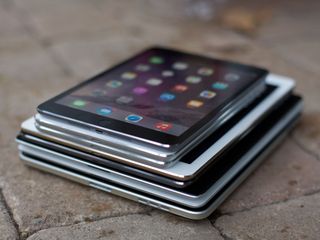
Five yeas later and the iPad continues to get lighter and faster, making it even more accessible as the biggest — for now — multitouch surface in Apple's product lineup. It also continues to get better. Yet it faces bigger phones on one side and thinner, lighter MacBooks on the other.
Meanwhile, Apple has introduced a range of new technologies, from Force Touch to Taptics, size classes to remote view controllers. We're on the eve of the Apple Watch, and who knows what may come in the years that follow.
Yet through it all, to many people, the iPad remains the most usable, most accessible computer they've ever owned. It remains their first, best window into the world of the internet and apps.
That makes this the most fascinating time in the iPad's history, and it makes the biggest question — what happens next?

Rene Ritchie is one of the most respected Apple analysts in the business, reaching a combined audience of over 40 million readers a month. His YouTube channel, Vector, has over 90 thousand subscribers and 14 million views and his podcasts, including Debug, have been downloaded over 20 million times. He also regularly co-hosts MacBreak Weekly for the TWiT network and co-hosted CES Live! and Talk Mobile. Based in Montreal, Rene is a former director of product marketing, web developer, and graphic designer. He's authored several books and appeared on numerous television and radio segments to discuss Apple and the technology industry. When not working, he likes to cook, grapple, and spend time with his friends and family.
